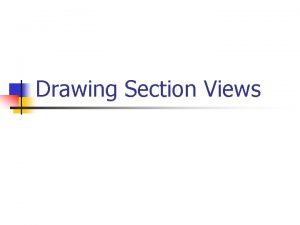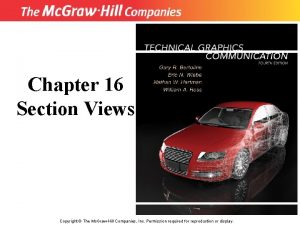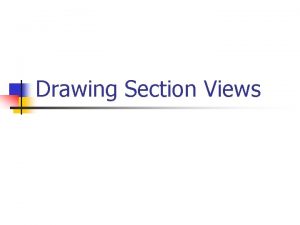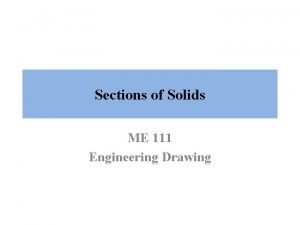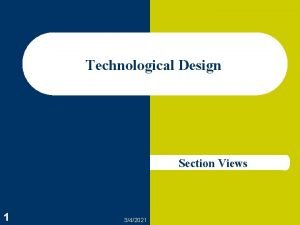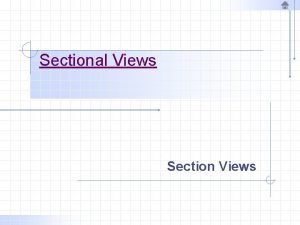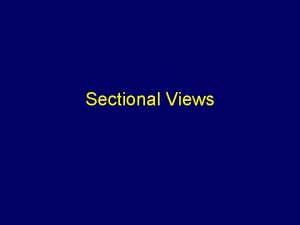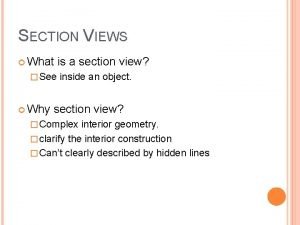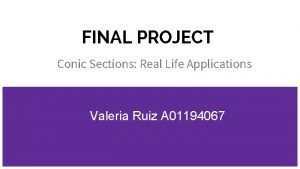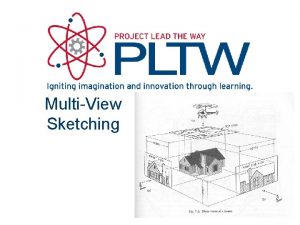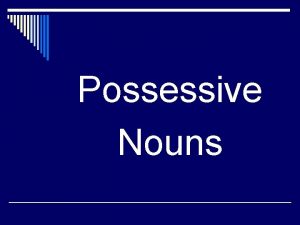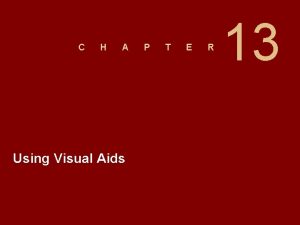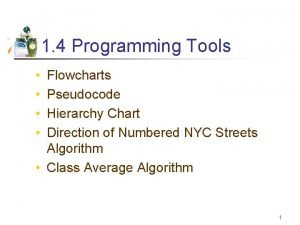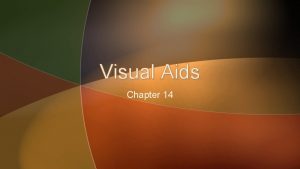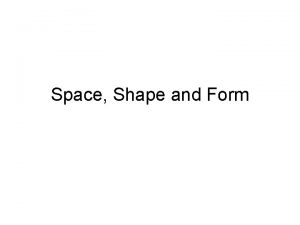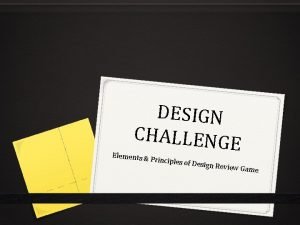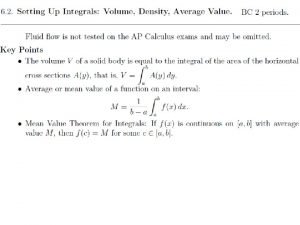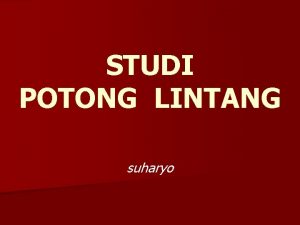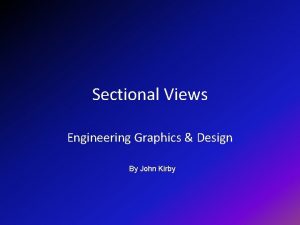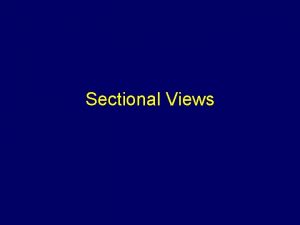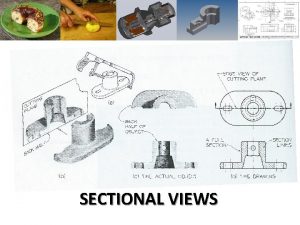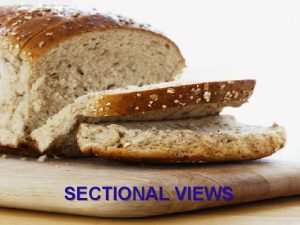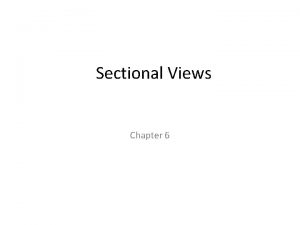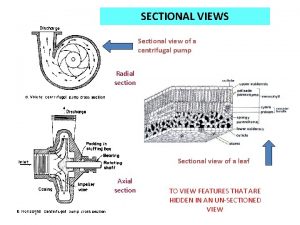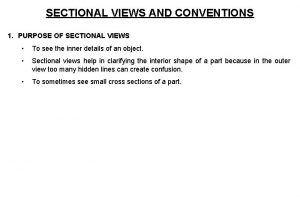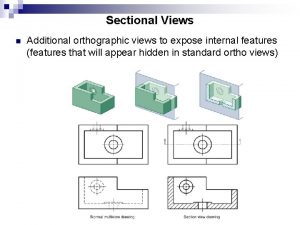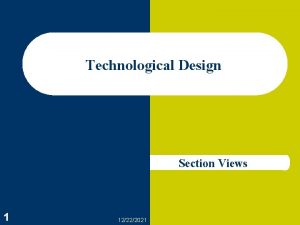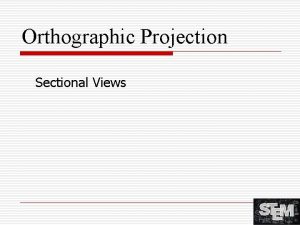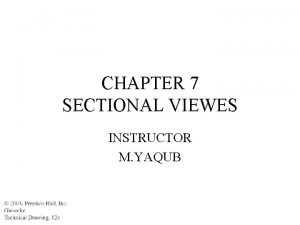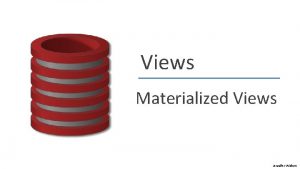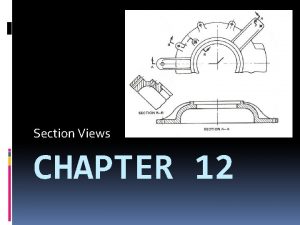Sectional Views Overview Sections are used to show




























- Slides: 28

Sectional Views

Overview • Sections are used to show interior details clearly. • A cutting-plane line shows where object was cut to obtain the section view. • Cross hatching in the section view shows the solid surface of the object which were cut through to produce the section. • Section views may replace standard views. • Conventional practices, such as not showing hatching on ribs and webs, help make sections easier to interpret correctly.

Full Section • Imagine the object cut through by the cutting plane. Think of the two halves pulled apart and a view looking on to the cut half.

Full Sections • Full sections show the object cut in half • Cutting plane line can be left out because it is understood to be through center • Usually replaces a standard view

The Cutting Plane Line • The cutting plane line is a thick dark line which uses one of the special patterns shown above. • The cutting plane line can be left out when it is obvious where it must lie from the appearance of the section itself.

Hatch Patterns


Lines in the Section View • show lines that may have been previously hidden, but are now visible behind cutting plane • usually don’t show hidden lines in section-- section views are to make interior details clear without hidden lines • show hidden lines only when the object would be misinterpreted if they were not shown.


Some Rules for Hatching • Adjacent areas divided by a visible line in a section view never both contain hatching. • Hatching is never bounded by a hidden line. • Hatching should not run parallel or perpendicular to a major feature.

Dimension Values & Hatching Sectional views are often used to show interior features clearly for dimensioning. If dimension values or extension lines cross hatched areas, you should break the hatching behind the dimension. The best practice is to place dimensions outside the object outline.


Half-Sections



Broken-out Sections

Half-section with break around a keyway

Revolved Sections Revolved sections are used to show the crosssectional shape of a bar, spoke, or arm in a single view. The cross-section is taken perpendicular to the view and then revolved 90 degrees around the center axis.

Examples of Revolved Sections


Offset Sections



Do not hatch ribs & webs When ribs, webs, and other thin flat parts are hatched, it gives a false impression of the object’s solidity. Leave the hatching of such features even though the cutting plane passes through them.

Aligned Sections Aligned sections use an angled cutting plane to pass through angled features. The plane and feature are then imagined to be revolved into the original plane and the section projected from there

Examples of Aligned Sections

Revolve Symmetrical Features

 Insidan region jh
Insidan region jh Full section view drawing
Full section view drawing Sectional views reveal
Sectional views reveal Technical drawing section view
Technical drawing section view Showing one-half of the view in section
Showing one-half of the view in section Purpose of sectional views
Purpose of sectional views True shape in engineering drawing
True shape in engineering drawing Types of sectional view
Types of sectional view In relation to sectional views
In relation to sectional views Revolved sections
Revolved sections Types of sectional view
Types of sectional view Vertical
Vertical Revolved section คือ
Revolved section คือ How to use conic sections in real life
How to use conic sections in real life Learning objectives for drawing
Learning objectives for drawing Owners plural possessive
Owners plural possessive A visual aid used to show statistical trends and patterns.
A visual aid used to show statistical trends and patterns. Pseudocode and flowchart examples
Pseudocode and flowchart examples A visual aid used to show statistical trends and patterns
A visual aid used to show statistical trends and patterns Form shape and space
Form shape and space Past present continuous examples
Past present continuous examples The circular chart that is used to remember
The circular chart that is used to remember Pros and cons of cross sectional study
Pros and cons of cross sectional study Sphere cross sectional area
Sphere cross sectional area Prevalence ratio
Prevalence ratio Reproduction in humans
Reproduction in humans Cross-sectional correlational design
Cross-sectional correlational design Cross sectional
Cross sectional Types of sectional view
Types of sectional view

